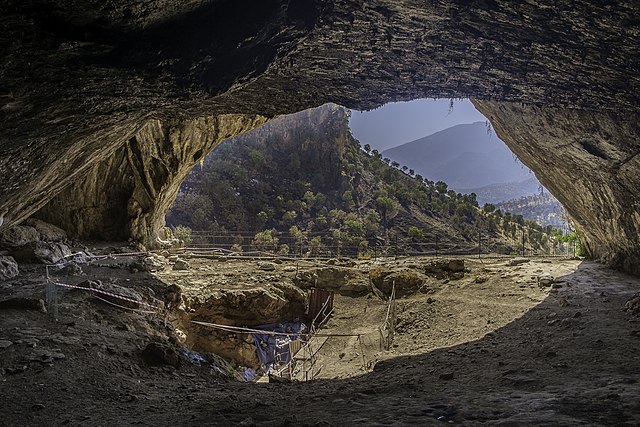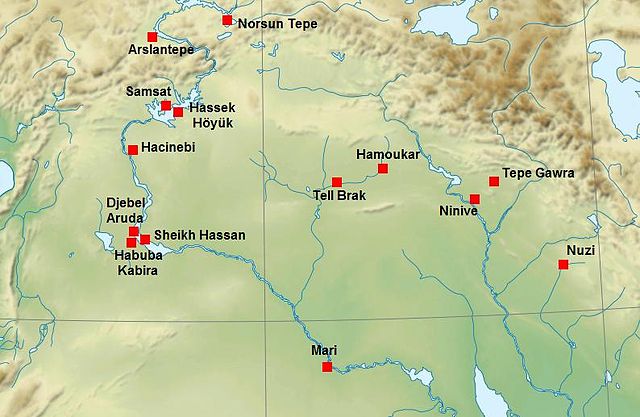Upper Mesopotamia constitutes the uplands and great outwash plain of northwestern Iraq, northeastern Syria and southeastern Turkey, in the northern Middle East. Since the early Muslim conquests of the mid-7th century, the region has been known by the traditional Arabic name of al-Jazira and the Syriac variant Gāzartā or Gozarto (ܓܙܪܬܐ). The Euphrates and Tigris rivers transform Mesopotamia into almost an island, as they are joined together at the Shatt al-Arab in the Basra Governorate of Iraq, and their sources in eastern Turkey are in close proximity.
Tigris river flows through Mosul, near the ancient Assyrian city of Nineveh, which is a major settlement and hosts farmland in Upper Mesopotamia
Monumental stone buildings at Göbekli Tepe, c. 9000 BC
Uruk period (c. 4000 to 3100 BC).
Iraq, officially the Republic of Iraq, is a country in West Asia and in the geopolitical region known as the Middle East. With a population of over 46 million, it is the 31st-most populous country. It is a federal parliamentary republic that consists of 19 governorates. Iraq is bordered by Turkey to the north, Iran to the east, the Persian Gulf and Kuwait to the southeast, Saudi Arabia to the south, Jordan to the southwest, and Syria to the west. The capital and largest city is Baghdad. Iraqi people are diverse; mostly Arabs, as well as Kurds, Turkmen, Assyrians, Armenians, Yazidis, Mandaeans, Persians and Shabakis with similarly diverse geography and wildlife. Most Iraqis are Muslims – minority faiths include Christianity, Yazidism, Mandaeism, Yarsanism and Zoroastrianism. The official languages of Iraq are Arabic and Kurdish; others also recognized in specific regions are Turkish, Suret, and Armenian.

Inside the Shanidar Cave, where the remains of eight adults and two infant Neanderthals, dating from around 65,000–35,000 years ago were found
Statue of Sumerian ruler Gudea of Lagash
Bronze head of an Akkadian ruler from Nineveh, presumably depicting either Sargon of Akkad, or Sargon's grandson Naram-Sin
Detail of a relief from the reconstruction of the Ishtar Gate, which display symbols of the Babylonian god Marduk.







